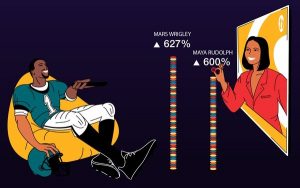CNET Co-Founder Moves Into AI Voice Content Creation

CNET co-founder Shelby Bonnie has created a video-production service that uses artificial intelligence (AI) to turn a basic video shot on a mobile phone into engaging content.
The tool is geared toward all types of creators, such as casual editors, marketers working for small businesses and even editors working on big-budget ads in the entertainment industry.
Marketers can use the technology to test different versions of audio in videos for an ad. They can create 45 different iterations with incurring a major cost.
The videos are produced by creators who use Worbler.AI and are a bit quirky, but there are hundreds of voices in the engine from which to choose.
Here’s how it works. A creator creates a video and overlays a voice from the website on top of the images. AI-powered text-to-speech makes it easy to add voiceover to a video.
More than 100 voices are available, all performed by paid actors to enhance the content. The user writes a script, selects a voice and the technology does the rest.
“If I do a video FAQ of how to use my product, or an ad, it will resonate more when the voice is consistent from where they are from,” he said. “You can do one cut of a video and add a different accept to each.”
Bonnie believes it will lower the barrier for people, especially young students, to be more creative. The downside, he said, are deepfakes.
Noel Weichbrodt, president at Worbler.ai and the tech guy behind the tech, said the technology will not allow anyone to clone a voice. They can only use the voice created by paid actors. A digital mark is inserted in each piece of content, along with a cryptograph fingerprint on each piece.
“If there is a video and a watermark on the video, the social media networks need a way to show, cryptographically claim, that the video was produced using AI,” Weichbrodt said. “It shouldn’t have to be a sleuthing exercise”
Through sound effects, filters and voice, Worbler aims to transform basic videos without the need for professional editing software.
The technology offers AI-powered voice transformation, an AI-mix panel, a voice filter library, and text-to-speech capabilities.
(7)
Report Post







